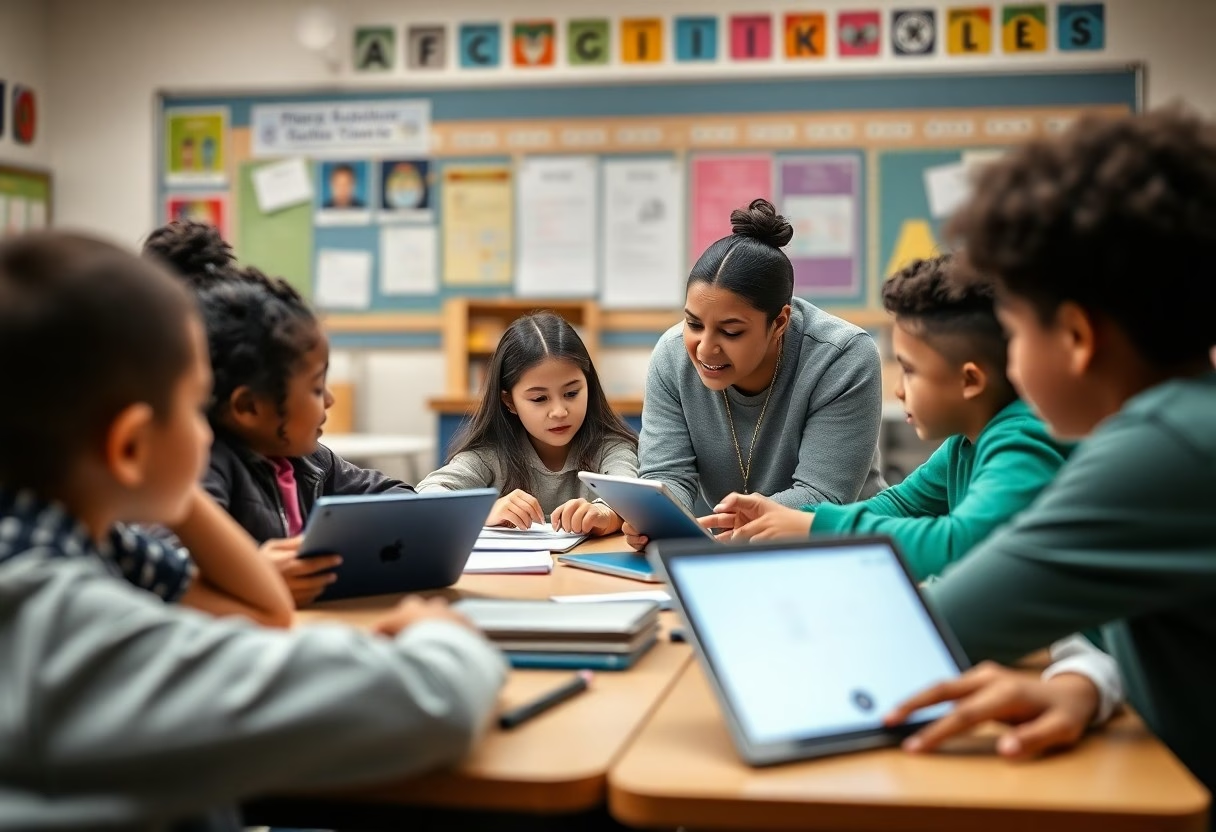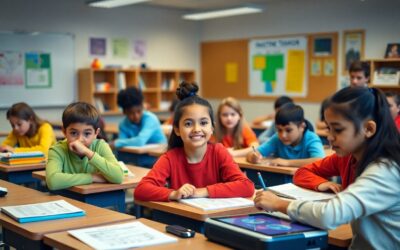It’s imperative to recognize that personalized learning can transform the educational landscape for students. By implementing specific strategies, you can create an environment where each learner’s unique needs are met, allowing them to engage deeply with the material. From leveraging technology to promote student agency, to differentiating instruction and fostering collaborative environments, this blog post explores effective methods that schools can use to cultivate a culture of personalized learning, ultimately enhancing student outcomes and satisfaction.
Understanding Personalised Learning
The concept of personalised learning centers on tailoring education to meet each student’s unique needs, interests, and learning pace. This approach shifts the focus from standardized teaching methods to a more individualized experience, promoting engagement and better outcomes. By embracing various teaching strategies and technologies, you can foster an environment where students take ownership of their educational journey.
Definition and Key Components
An effective personalised learning model includes several key components: understanding students’ strengths and weaknesses, adapting learning activities to fit their individual needs, and using ongoing assessments to inform instructional strategies. This model emphasizes collaboration among educators, students, and parents to create a supportive and responsive learning environment.
The Importance of Personalised Learning
After acknowledging the diverse needs of students, you can see that personalised learning is vital in ensuring that every learner reaches their full potential. By focusing on individual strengths and challenges, you provide opportunities for each student to engage deeply with the material and develop necessary skills at their own pace.
Due to the variability in learning styles and preferences among students, personalised learning becomes especially relevant in today’s diverse classroom settings. It allows you to cater to different backgrounds, abilities, and interests, creating a more inclusive environment where every student feels valued. Moreover, fostering personalised learning can lead to higher motivation and achievement, as students are more likely to engage with content that resonates with them personally. Implementing these strategies can ultimately transform your educational approach, leading to improved outcomes for all learners.
Strategies for Implementing Personalised Learning
You can create an environment where personalised learning thrives by adopting targeted strategies. Begin by focusing on understanding each student’s unique interests and learning styles. Implementing varied instructional methodologies, fostering a collaborative community, and continuously monitoring student progress are vital. By embracing a culture of flexibility and adaptation, you empower both educators and students to engage in meaningful learning experiences.
Curriculum Differentiation
On your journey towards personalised learning, curriculum differentiation plays a significant role. This involves designing varied learning experiences tailored to students’ readiness, interests, and learning profiles, allowing every learner to engage in content that resonates with them. Emphasising choice and encouraging students to explore topics in ways that suit them best can enhance motivation and deepen understanding.
Technology Integration
Technology provides innovative tools that support personalised learning experiences, enabling you to cater to diverse student needs. Through adaptive learning platforms, online resources, and educational apps, you can create a dynamic learning environment where students can learn at their own pace and explore subjects of particular interest to them.
Strategies for effective technology integration include training teachers to use these tools effectively and providing students with access to learning materials that accommodate various learning preferences. By leveraging data analytics, you can gain insights into individual progress, tailoring instruction accordingly. This personalized approach not only engages students but also fosters self-directed learning, encouraging them to take ownership of their educational journey.
Professional Development for Educators
Some strategies for fostering a culture of personalized learning in schools revolve around professional development for educators. Ongoing training helps you stay informed about the latest research and methodologies in personalized learning, ensuring you can effectively implement these concepts in your classroom. By investing in your growth as an educator, your ability to cater to the diverse needs of your students significantly improves.
Training and Resources
The availability of training and resources is important for educators aiming to implement personalized learning. You should seek out workshops, online courses, and educational literature that provide the knowledge and skills necessary for success. Comprehensive professional development programs can equip you with strategies to assess individual student needs and tailor instructional methods accordingly.
Building Collaborative Cultures
Beside individual training, fostering collaborative cultures among educators can greatly enhance personalized learning initiatives. When you and your peers share experiences and insights, your collective knowledge expands, leading to continuous improvement. Creating support networks allows you to discuss challenges and successes, promoting a collective responsibility for student learning.
Resources such as team-building activities, professional learning communities, and mentorship programs can facilitate this collaborative culture. As you engage with your colleagues, you can exchange ideas and strategies for addressing various learning styles and needs. A supportive network can inspire you to experiment with personalized learning approaches, while also providing the encouragement to overcome obstacles. Building these relationships not only enriches your professional experience but also positively impacts your students’ learning outcomes.

Engaging Students and Families
Once again, fostering a culture of personalized learning requires the active engagement of both students and their families. It’s necessary to create an environment where all stakeholders feel valued and involved in the educational process. By implementing initiatives such as workshops, individual learning plans, and open forums, you can ensure that these groups work collaboratively towards shared educational goals, enhancing student motivation and success.
Involving Students in the Learning Process
By encouraging students to take ownership of their learning, you align educational experiences with their interests and goals. This could involve allowing them to set their own learning objectives or guiding them in choosing projects that resonate with their passions. When students feel empowered to contribute, they are more likely to engage meaningfully with the material.
Communication with Families
Against the backdrop of personalized learning, open and consistent communication with families is necessary. Keeping families informed about their child’s progress and educational strategies fosters a sense of partnership that supports learning outcomes. Regular updates, parent-teacher conferences, and digital communication platforms create a bridge between home and school, ensuring that everyone’s on the same page.
Also, effective communication with families involves sharing resources that can help them support their child’s learning journey at home. Providing tips on learning strategies, activities, or tools can empower parents to engage more deeply in their child’s education. This partnership not only helps reinforce the lessons learned at school but also makes families feel more connected and invested in the academic environment.
Assessment and Feedback Methods
After implementing a personalized learning approach, schools must refine their assessment and feedback methods. Traditional testing can overlook individual strengths and weaknesses, therefore, integrating adaptive assessments allows you to measure student understanding more accurately. Emphasizing formative assessments provides you with timely insights into each student’s progress, helping to tailor instruction to their unique needs.
Personalized Assessment Techniques
Between standard exams and quizzes, personalized assessment techniques like project-based assessments and reflective journals allow you to evaluate your students holistically. These methods not only assess knowledge retention but also encourage creativity and critical thinking, enabling you to gather deeper insights into individual learning styles and areas for improvement.
Continuous Feedback Loops
Between assessments, establishing continuous feedback loops fosters an environment where your students can thrive. By regularly providing constructive feedback, you encourage reflection and self-assessment, keeping learners engaged in their own educational journey. This iterative process makes it easier for you to identify specific challenges and adapt your teaching strategies accordingly.
It is vital to create structures for ongoing communication around feedback, such as scheduled check-ins or digital platforms that facilitate real-time updates. This approach empowers you to maintain an open dialogue with your students, ensuring they feel supported and aware of their growth areas. By encouraging students to set their learning goals based on your feedback, you cultivate a sense of ownership over their educational experience and foster a community of continuous improvement.
Case Studies of Successful Implementation
Unlike many initiatives that fall short, several schools have successfully implemented personalized learning strategies, showcasing impressive outcomes:
- School A in Texas reported a 30% increase in student engagement and a 25% improvement in standardized test scores after shifting to personalized learning.
- School B in California saw a 40% reduction in dropout rates following the introduction of individualized learning plans for students.
- School C in Florida achieved an increase in overall student performance by 35% through competency-based assessments and tailored curriculum.
Examples from Diverse Educational Settings
Examples of personalized learning can be found across various educational environments, from urban schools to rural districts. One innovative approach involved a community partnership in a suburban school district that integrated technology tools, which led to a notable improvement in student collaboration and project outcomes.
Lessons Learned from Implementation Challenges
Against the odds, some schools faced hurdles during their personalized learning rollout, revealing valuable insights. Challenges such as teacher resistance and inadequate training often impaired initial efforts, highlighting the significance of thorough preparation.
Considering the setbacks encountered during implementation, it is vital for you to address potential obstacles proactively. Engaging educators in the planning process is important to mitigate resistance. Furthermore, comprehensive training and ongoing support for teachers can help cultivate a better understanding of personalized learning’s benefits, ensuring a smoother transition and, ultimately, enhancing student achievement.
Conclusion
Presently, fostering a culture of personalized learning in schools necessitates a multi-faceted approach. You can implement strategies such as differentiated instruction, data-driven assessments, and collaborative learning environments that cater to individual student needs. Additionally, encouraging student agency and choice in their learning pathways empowers them to take ownership of their education. By prioritizing technology integration and professional development for educators, you enhance the learning experience and promote a supportive atmosphere that values each student’s unique journey. Your commitment to these strategies will cultivate an enriching environment that champions personalized learning for all.
Q: What role does teacher training play in fostering personalized learning in schools?
A: Teacher training is crucial in establishing a culture of personalized learning. Schools can implement professional development programs focused on effective instructional strategies that cater to diverse learning needs. Training should empower educators to use data-driven instruction, integrate technology effectively, and develop strong relationships with students. Additionally, equipping teachers with the tools to create flexible learning environments enables them to tailor learning experiences, facilitate student choice, and encourage self-directed learning.
Q: How can schools leverage technology to enhance personalized learning?
A: Schools can utilize technology to provide personalized learning experiences by incorporating learning management systems, adaptive learning software, and digital resources. By using these tools, educators can analyze student performance data to adjust lessons according to individual strengths and areas for improvement. Furthermore, technology enables students to work at their own pace, access a variety of learning materials, and engage in collaborative projects with peers. Incorporating tech-savvy practices not only supports personalized learning but also prepares students for future academic and career challenges.
Q: In what ways can school community involvement impact personalized learning initiatives?
A: Engaging the wider school community is vital for the success of personalized learning initiatives. Schools can foster partnerships with families, local businesses, and community organizations to create a support network that enhances student learning opportunities. Involving parents in the learning process promotes open communication and provides insight into individual student needs. Additionally, community-based mentorship programs and internships can give students real-world experiences aligned with their interests, further enriching the personalized learning environment.




0 Comments